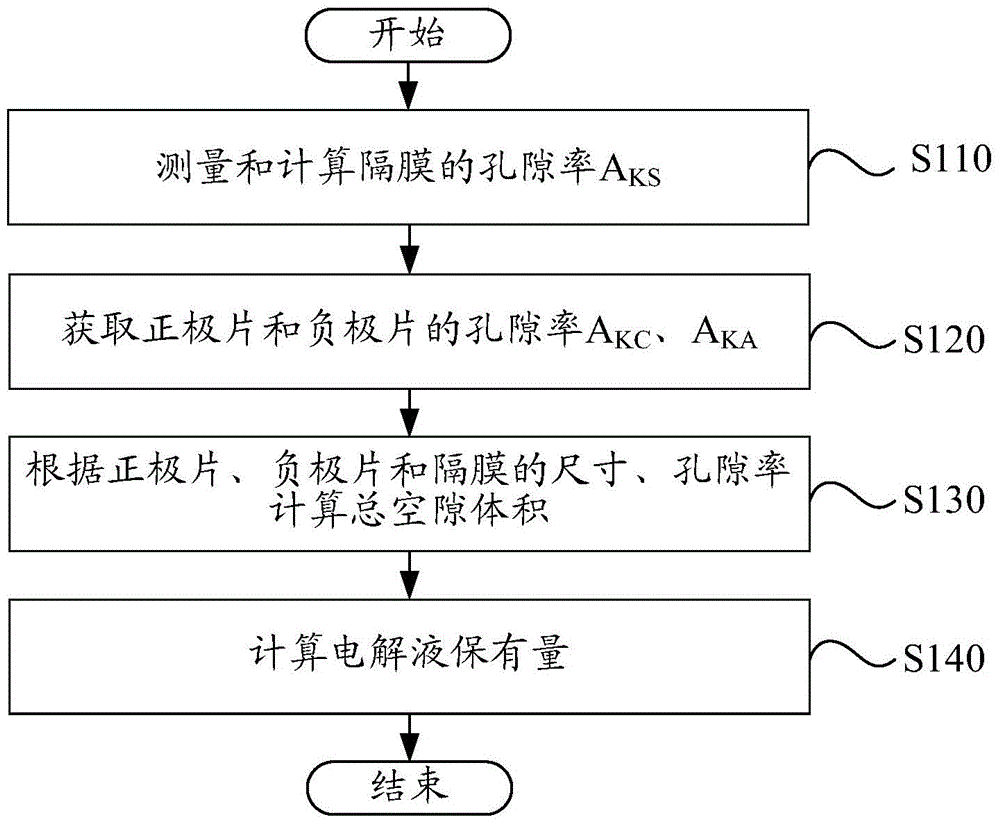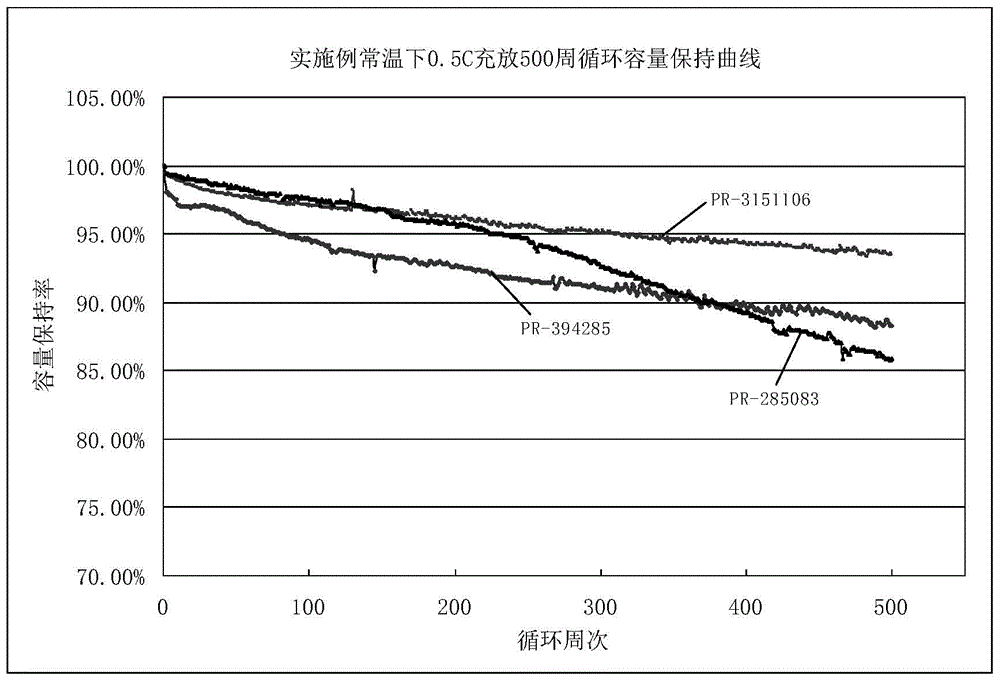Method for determining retaining amount and injection amount of electrolyte solution of lithium ion battery
A lithium-ion battery, electrolyte technology, applied in the direction of electrical digital data processing, instruments, calculations, etc., can solve difficult problems, inability to determine the specifications of the injection volume, and high environmental humidity requirements
- Summary
- Abstract
- Description
- Claims
- Application Information
AI Technical Summary
Problems solved by technology
Method used
Image
Examples
Embodiment Construction
[0063] like figure 1 Shown is a flow chart of a method for determining the amount of electrolyte in a soft-packed lithium-ion battery according to an embodiment. The method comprises the steps of:
[0064] Step S110: Measuring and calculating the porosity A of the membrane KS . Porosity is the ratio of pores inside a material to the total volume. After obtaining the porosity of the separator, the volume of the electrolyte that can be accommodated therein can be calculated, thereby calculating the amount of electrolyte retained in the separator.
[0065] This step includes:
[0066] Step S111: cutting a section of separator sample i for making a flexible packaging lithium-ion battery. Separator sample i is cut from the separator material of the battery to be made, and is in the shape of regular strips.
[0067] Step S112: Measuring the length L of the diaphragm sample i SSi , width W SSi and thick H SSi . Measure its length L with a ruler SSi , width W SSi ; Measure...
PUM
 Login to View More
Login to View More Abstract
Description
Claims
Application Information
 Login to View More
Login to View More - R&D
- Intellectual Property
- Life Sciences
- Materials
- Tech Scout
- Unparalleled Data Quality
- Higher Quality Content
- 60% Fewer Hallucinations
Browse by: Latest US Patents, China's latest patents, Technical Efficacy Thesaurus, Application Domain, Technology Topic, Popular Technical Reports.
© 2025 PatSnap. All rights reserved.Legal|Privacy policy|Modern Slavery Act Transparency Statement|Sitemap|About US| Contact US: help@patsnap.com



